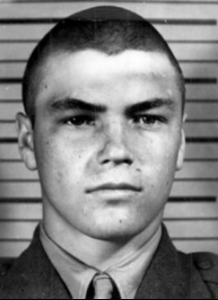Teter, Fay Gene
Marine Reserves Private

Fay Gene Teter, age 17, from Rock Island, Illinois, Rock Island county.
Parents: Bertha L. Teter
Service era: World War II
Date of death: Monday, November 22, 1943
Death details: On August 2, 2022, the Defense POW/MIA Accounting Agency (DPAA) identified the remains of Private Fay Gene Teter, missing from World War II. Private Teter entered the U.S. Marine Corps from Illinois and served in A Company, 1st Battalion, 6th Marine Regiment, 2nd Marine Division. From November 20 through 23, 1943, the U.S. Marine Corps and U.S. Navy conducted a large-scale amphibious assault on the Japanese-held atoll of Tarawa, a crucial stepping stone in the planned U.S. offensive across the central Pacific toward Japan. After the initial landing on Betio, Tarawa’s main island, Marines launched attacks inland from the beaches and seized the island’s airfield. The enemy launched vicious counterattacks and two more days of intense fighting were needed to secure Betio. The last enemy strongpoints were taken on the morning of November 23. Pvt Teter was killed in action sometime on November 22, 1943, but the exact circumstances of his loss are unknown. His remains were reportedly recovered and buried in Row D, Cemetery 33, a temporary U.S. burial site on Betio. In 2009 the non-profit organization History Flight located a site on Betio Island later identified as Cemetery 33. Excavations at this site have continued since this date. In March 2019 History Flight located a burial trench west of Cemetery 33 identified as Row D. Remains recovered from the burial trench were turned over to the DPAA for further study. Laboratory analysis and the totality of the circumstantial evidence available established one set of these remains as those of Pvt Teter.
Source: National Archives, Defense POW/MIA Accounting Agency